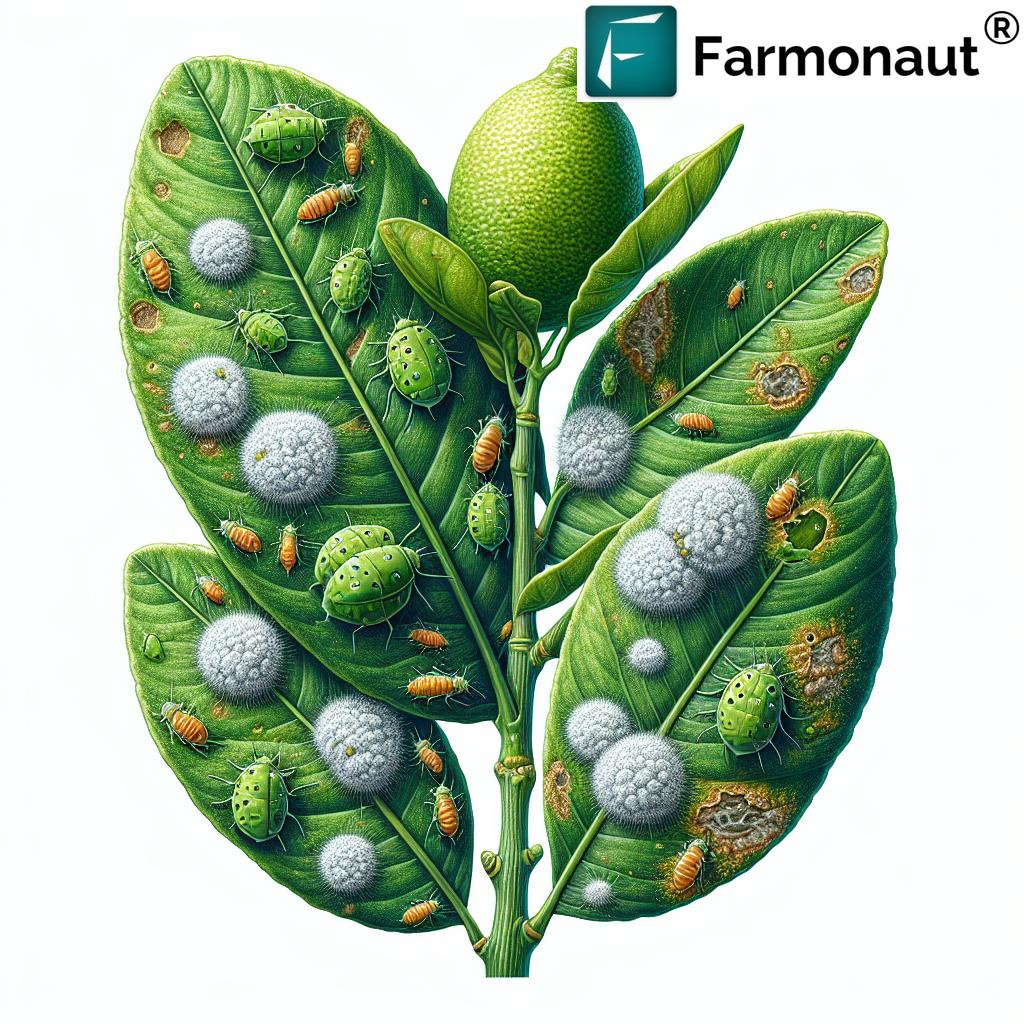Aquaculture Automation & Deep Tech: 2025 Digital Innovation
Introduction: Why 2025 Is Pivotal for Aquaculture
Aquaculture is undergoing a transformative evolution. The automation, deep tech aquaculture, and aquaculture digital innovation of 2025 mark a new era for sustainable seafood production. As the global appetite for fish, shellfish, and aquatic products grows amid dwindling wild stocks and mounting environmental concerns, responding with smarter, more efficient farming is critical. In this article, we explore how advanced technologies are reshaping modern aquaculture by providing data-driven, automated, and sustainable solutions for every stage of the production cycle.
The market’s demand for clean, traceable, and sustainable seafood continues to rise amid diminishing wild stocks, with aquaculture accounting for nearly 50% of the world’s seafood supply. Yet, traditional practices are challenged by disease outbreaks, labor inefficiencies, volatile water conditions, and growing scrutiny on environmental impact. By 2025, innovations in automation and digital management have transformed the sector, driving unprecedented efficiencies, precision, and profitability—without compromising sustainability.
The Need for Innovation in Aquaculture
Modern aquaculture faces a host of operational, ecological, and market challenges. As seafood demand continues to rise in 2025 and beyond, traditional farming practices—often relying on manual monitoring, imprecise feeding, and periodic water checks—are increasingly unsustainable. Some of the persistent hurdles include:
- Disease outbreaks and biosecurity threats leading to significant production losses
- Water quality management difficulties resulting in suboptimal growth rates and high fish mortality
- Feed inefficiencies, representing major cost centers and pollutants due to nutrient runoff
- Labor-intensive operations and lack of real-time data for actionable decision-making
The aquaculture sector must evolve rapidly to ensure sustainable food security while minimizing ecological footprints. Innovations in automation, deep tech aquaculture, and aquaculture digital innovation are now imperative, empowering operators to optimize every aspect of the farming cycle—from seed to harvest.
Automation in Aquaculture: From Routine to Intelligent Farming
Aquaculture automation has matured from simple mechanized feeders to fully integrated, AI-driven smart systems that reshape traditional practices. In 2025, automation in aquaculture encompasses advanced robotics, IoT sensor networks, automated feeding systems, and water quality management tools.
- Autonomous underwater drones and robotic farmers now monitor stocked areas in real time, collecting critical data on fish health, growth rates, and environmental parameters like temperature, oxygen, and pH levels.
- Automated feeders equipped with AI algorithms deliver precision feeding by analyzing appetite, biomass estimation, and past growth data. This advancement drastically reduces feed waste and nutrient runoff—both major cost and pollutant factors in aquaculture.
- Automated cleaning and net maintenance drones maintain optimal conditions, preventing biofouling and reducing the need for chemical interventions.
Such automation not only improves operational efficiency but also boosts profitability by optimizing resource use, reducing labor costs, and minimizing disease outbreaks. In addition, real-time data collection supports agile responses to emerging threats and environmental changes, ensuring the sector remains resilient in a rapidly shifting global food market.
Deep Tech Aquaculture: AI, IoT & Big Data Revolution
The integration of AI, IoT, and big data analytics—collectively termed deep tech aquaculture—is revolutionizing how modern aquafarms optimize production and minimize risks. In 2025, IoT sensors densely populate tanks, ponds, and offshore net pens, continuously capturing environmental and physiological data:
- Water temperature, dissolved oxygen, salinity, and pH are monitored and transmitted via digital platforms for immediate analysis and actionable alerts.
- AI-driven predictive algorithms analyze historical and real-time data to forecast disease outbreaks, optimal harvest times, and market conditions.
- Machine learning aids in genetic selection and breeding—accelerating cultivation of robust, disease-resistant species specifically tailored for different environments and consumer needs.
Such technologies shorten the feedback loop between crisis detection and mitigation, enabling operators to reduce losses, optimize yields, and adapt quickly to weather anomalies or chemical imbalances. Beyond farm gates, big data analytics inform supply forecasting, price modeling, and strategic resource allocation at the regional and global levels.
Aquaculture Digital Innovation and Smart Aquafarms
Digital innovation has remade the fabric of aquaculture farm management. Smart aquafarms of 2025 are interconnected ecosystems, leveraging digital platforms to seamlessly integrate operations, compliance, analytics, and supply chain management.
- Management software aggregates sensor data, records bio-logs, tracks feeding operations, and automates reporting for regulatory compliance—all from cloud-based dashboards.
- Remote monitoring tools empower farmers to manage multiple sites efficiently, reducing onsite labor requirements and enabling real-time multi-site oversight.
- Market analytics and supply chain blockchain traceability ensure transparency from hatchery to retailer, building consumer confidence and enabling rapid response to disease outbreaks or recalls.
These digital platforms encourage modernization and attract talent—particularly younger, tech-savvy professionals—who seek to drive sustainable growth in the sector. They also make advanced farming more accessible to operators new to aquaculture, supporting sector-wide viability and innovation.
Key Technologies Revolutionizing Aquaculture in 2025
| Technology | Key Features | Estimated Impact on Yield (%) | Estimated Cost Savings (%) | Sustainability Benefits |
|---|---|---|---|---|
| AI-Driven Monitoring | Real-time aquatic health tracking, growth rate prediction, disease forecasting | +15–20% | Up to 25% | Early intervention, prevents mass mortality, less chemical use |
| IoT Sensor Networks | Continuous water quality, oxygen, pH, and nutrient level monitoring | +12–16% | Up to 20% | Improved water management, reduced resource waste |
| Automated Feeding Systems | AI-based biomass estimation, appetite detection, precision delivery | +10–15% | Up to 30% | Reduced nutrient runoff and feed waste |
| Robotic Maintenance Drones | Automated cleaning, net repair, biofouling detection | +8–12% | Up to 15% | Minimized chemical and antibiotic use; improved habitat conditions |
| Blockchain Traceability | Immutable records, transparent supply chain tracking | +5–8% | Up to 10% | Reduced fraud, confirmed sustainability claims |
| Big Data Analytics Platforms | Integration of real-time and historical data, predictive analytics | +10–18% | Up to 18% | Informed resource allocation; proactive reaction to challenges |
Sustainability and Environmental Impact: 2025 Redefines Aquaculture
The true value of aquaculture automation and digital innovation emerges in their power to drive sustainability. Leveraging precise monitoring and smart management, advanced technologies are revolutionizing the intersection of productivity and environmental stewardship in seafood farming:
- Reduced resource consumption: Precision systems optimize feed and water inputs, significantly cutting down on waste and pollution.
- Minimized disease outbreaks: AI-powered early warning and continuous monitoring enable rapid intervention, lessening dependency on antibiotics and chemicals.
- Maintaining ecological balance: Digital oversight of integrated multitrophic aquaculture (IMTA) fosters circular nutrient cycling, using waste from fish to nourish shellfish and aquatic plants—enhancing both profitability and ecosystem health.
- Lower carbon footprint: Automated systems reduce energy and labor requirements, contributing to more sustainable, climate-friendly aquaculture practices.
In a world where food security and environmental balancing are increasingly interlinked, these innovations represent a rare opportunity to support global seafood supply growth without compromising the planet’s health.
Farmonaut: Advanced Satellite and AI Solutions for Aquaculture
At Farmonaut, we are dedicated to democratizing access to satellite-driven insights and AI-powered advisory systems—enabling the aquaculture sector to monitor, optimize, and scale operations smarter and more sustainably. Our platform provides multispectral satellite monitoring, real-time AI analytics, blockchain-based traceability, and resource management tools, enhancing operational efficiency and sustainability at every stage of seafood production.
- Satellite-Based Monitoring: We harness advanced satellite imagery and data algorithms for aquatic crop health assessment, water condition detection, and infrastructure management—providing actionable insights for aquafarms of all scales.
- Jeevn AI Advisory: Our Jeevn AI system delivers custom real-time insights, including weather forecasts, risk alerts, and strategic planning guidance, all informed by the latest deep tech aquaculture advancements.
- Blockchain Traceability and Transparency: With food authenticity under scrutiny, our blockchain system guarantees traceable supply chains—minimizing fraud and ensuring every shipment meets regulatory and market standards.
- Fleet and Resource Management: Our digital tools optimize fleet logistics and resource allocation, reducing energy and fuel waste.
- Environmental Impact Monitoring: Aquafarms can track carbon emissions and resource usage, with practical recommendations to improve sustainability and meet national and international compliance benchmarks.
Our solutions are accessible on web, iOS, Android apps, and through a robust Farmonaut API—enabling seamless integration into your own management systems. Developers can explore detailed documentation at Farmonaut API Developer Docs for custom deployments tailored to your aquaculture operation.
Frequently Asked Questions (FAQ) on Aquaculture Automation & Deep Tech
1. What is aquaculture automation?
Aquaculture automation refers to the use of advanced tech and digital systems such as robotics, IoT sensors, AI-driven feeding platforms, and monitoring drones to manage and optimize seafood farming operations—improving productivity and reducing environmental impact.
2. How does deep tech aquaculture differ from traditional aquaculture?
Deep tech aquaculture leverages cutting-edge digital innovations—such as artificial intelligence, big data analytics, and interconnected IoT sensor networks—to offer predictive insights, automate decision-making, and ensure real-time farm responsiveness. In contrast, traditional methods largely rely on manual labor, periodic checks, and basic mechanization.
3. What are the primary sustainability benefits of digital innovation in aquaculture?
- Improved resource use efficiency (feed, water, energy)
- Reduced pollution through precision nutrient management
- Early disease detection lowers chemical and antibiotic use
- Optimized multispecies farming for ecological balance
- Transparent, traceable supply chains ensuring product authenticity and sustainability claims
4. How does Farmonaut support digital transformation in aquaculture?
At Farmonaut, we provide satellite-powered insights, AI-driven advisory, blockchain traceability, and resource management platforms—enabling aquaculture operators to monitor, optimize, and scale sustainably and efficiently from any device, anywhere in the world.
5. Can small- and medium-scale operators benefit from automation?
Absolutely—many automation and digital management solutions, including those from Farmonaut, are designed for scalability. Small and medium operators can gain big advantages in resource savings, yield improvement, and compliance without massive capital investments.
6. What is the role of blockchain in aquaculture digital innovation?
Blockchain enables immutable, tamper-proof tracking of seafood products across the supply chain. This ensures regulatory compliance, authenticity, and consumer trust, drastically reducing fraud and enhancing sustainability claims.
7. Where can I access the Farmonaut platform?
The Farmonaut platform is accessible via web, Android, and iOS apps, and also offers an API for integration into existing digital farm management ecosystems.
Conclusion: Charting the Digital Future of Sustainable Seafood
In 2025 and beyond, aquaculture automation, deep tech aquaculture, and digital innovation represent the next frontier for sustainable seafood production. The integration of AI, IoT, robotics, blockchain, satellite imaging, and big data analytics is reshaping modern aquafarms—enhancing yields, reducing waste, lowering costs, and ensuring that ecological footprints are minimal. As operators, policymakers, and technology partners, we are witnessing an era where seafood supply and food security are no longer at odds with the health of our ecosystems.
Embracing digital technology—from smart sensors to AI-driven management and traceability—is essential to achieving sector-wide resilience and profitability. At Farmonaut, we are committed to delivering affordable, scalable, and actionable insights for the evolving needs of aquaculture operators worldwide. Whether you’re managing a large-scale offshore farm or a smaller, land-based operation, adopting these advanced solutions ensures you can meet escalating demand with confidence, sustainability, and a powerful digital edge.
The wave of change has arrived—will your aquafarm ride it?

 Track & reduce your aquafarm’s carbon footprint with Farmonaut’s advanced environmental monitoring platform—an essential tool in demonstrating and achieving sustainability goals.
Track & reduce your aquafarm’s carbon footprint with Farmonaut’s advanced environmental monitoring platform—an essential tool in demonstrating and achieving sustainability goals.








